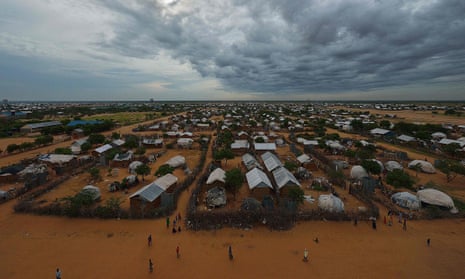At last month’s World Humanitarian Summit, Kenya’s Deputy President William Ruto announced that the decision to close down its two largest refugee camps, Dadaab and Kakuma, was final.
This is despite the fact the closures are in violation of international law and the UN has warned of the “devastating consequences” they will have. Over 600,000 residents will be displaced, putting them at immediate risk. Moreover the forced closure betrays the most basic refugee rights, and can only lead to countless human rights violations as refugees returning to their home countries face grave consequences.
Kenya’s decision is not without precedent. In 2012, the Tanzanian government closed Mtabila refugee camp, forcing its 35,000 Burundian inhabitants to find a new home back in Burundi, the country rife with violent conflict from which they’d fled. Violence in Burundi has since forced over 250,000 residents to seek safety in neighbouring countries –137,000 of those back in Tanzania.
Yet Kenya’s situation is a symptom of a larger, more fundamental issue. The core of the problem is that camps are the foundation of the international community’s refugee response strategy. They have become the target for the bulk of humanitarian aid. Camps have become the beginning, and in many cases the end, of international support to the swelling refugee crisis.
Camps, as their name suggests, are intended to be temporary solutions. Yet this is rarely the case: Dadaab and Kakuma for example are 25 years old. Dadaab was built in 1992 to provide temporary housing for 90,000 refugees fleeing Somalia’s violent civil war. It is now the largest refugee camp in the world – and Kenya’s third largest “city”.
Kenya’s situation underscores the urgent need to find sustainable alternatives to camps, as well as find sustainable solutions for the millions of urban refugees who have either left or chosen to avoid them. Today, more than half of the global refugee population – an estimated 60% – reside in urban areas, not camps. And an overwhelming majority – 86% – reside in developing countries.
And in these urban areas, NGOs around the globe are illustrating the possibility of creating alternatives to refugee camps. Their programmes strive to make it possible for refugees to achieve independence from international aid, find dignified living conditions, and establish long-term livelihoods while benefiting their host communities in myriad ways.
One programme in Kenya, for example, provides shelter and support to refugee women and children, who comprise more than half of the global refugee population and are at grave risk of sexual and gender-based violence. The safe house provides 24-hour security as well as vital counselling services, medical and legal assistance, and a supportive community for residents. The programme also facilitates positive exit strategies for residents, linking them to long-term living arrangements and sustainable care within the local community.
Another programme in Irbid, Jordan creates housing for the city’s continual influx of Syrian refugees. In Irbid, housing has been a persistent issue. While cash-for-rent programmes provide temporary solutions for refugees, they drive up rent prices on the local housing market and make life even more difficult for locals and refugees alike. The Irbid programme is supported by the Norwegian Refugee Council (NRC), provides funding for local landlords to complete construction on multi-story buildings, creating housing for refugees while stimulating the local economy. So far, over 3,800 housing units have been created for over 8,700 refugees, with over 8,000 more on a waiting list as the NRC expands to other urban areas throughout Jordan.
Beyond NGO programmes like these, countless community-based organisations provide vital support. Often the only source of support for urban refugees, these organisations are usually led by refugees themselves and illustrate the power of a reciprocal relationship between refugees and their host countries.
One example is the Young African Refugees for Integral Development (Yarid), which has been serving the refugee community in Kampala, Uganda since 2008. Yarid’s founders, refugees who escaped violence in the DRC and resettled in Uganda, were inspired to create the organisation after witnessing firsthand the struggles of fellow refugees. Today, Yarid is a thriving community, tackling social issues including unemployment, public health, and ethnic conflicts, and providing vital education services to urban refugees from central Africa. However, scarce resources and an absence of international support mean these organisations struggle to survive.
Today, one in every 122 people is someone who has been forced to flee their homes. The crisis is real – and Kenya’s situation is just one example of how precarious our global reliance on encampment has become. If we want alternatives to work, we need to invest in what’s working.
Refugee camps aren’t working – but a host of programmes around the world are. It’s time for the international community to demonstrate its commitment to resolving the global refugee crisis by investing in solutions that hold real promise.
Sonia Ben Ali and Marilena Hatoupis are co-founders of Urban Refugees.
Join our community of development professionals and humanitarians. Follow@GuardianGDP on Twitter.
